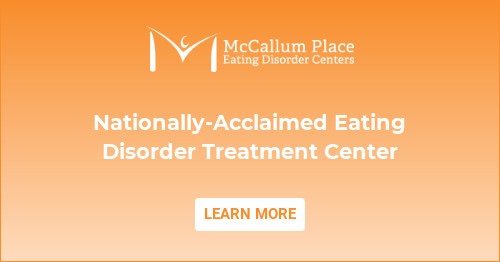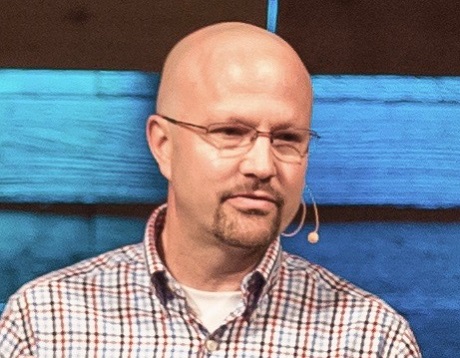- Calls to this hotline are currently being directed to Within Health, Fay or Eating Disorder Solutions
- Representatives are standing by 24/7 to help answer your questions
- All calls are confidential and HIPAA compliant
- There is no obligation or cost to call
- Eating Disorder Hope does not receive any commissions or fees dependent upon which provider you select
- Additional treatment providers are located on our directory or samhsa.gov
Body Views: Exploring How Various Views of the Body Contribute to and Heal Body Hatred

Body views are different than “body image” per se. Body image is shaped by a complex patchwork of historical, cultural, and personal influences. It can be impacted by how your family or culture talk about the body.
As a baseline, body image is how we are used to talking about the body. Body view is different in that it is how we think about bodies, such as what we believe makes up the body, what we believe happens to the body after death, or how we believe we should treat the body.
Some of the questions that our Body View will answer are:
- How do I treat my body?
- What is acceptable body transformation (IE: shaving, plastic surgery, tattoos, etc.)
- How do we think of the body philosophically? Is it good, is it evil, is it neutral?
- What is my responsibility toward my body?
- What does it mean to take care of the body?
- Why do I take care of my body?
- What is my responsibility toward the bodies of others?
- How do I interpret appetites and bodily desires?
- Where do I believe they come from – my body, my soul, my mind?
- What is the relationship between mind and body?
These questions can all reveal a lot of information about how an individual experiences and values their body. A lot of this has to do with worldview.
As therapists, we don’t want to push our worldview onto others, but, it is okay for us to be curious, and to teach our clients to be curious, about their worldview.
Some questions to learn about someone’s worldview may be:
- How do I make sense of suffering?
- What is the source of human rights?
- What defines right and wrong?
Now, body views would be more of a subset of these questions. If we can overcome the fear of offending someone and be genuinely curious enough to ask questions like these, I think we will learn a lot and will help to inform our therapy positively.
Current American Body Views
As we explore the historical and current body views in America, there are a few disclaimers. We will be taking a high-level view, as I am still learning all of this like many of you.
We also may skip some important things in the interest of keeping it simple, but I will mention them briefly and encourage you to explore on your own time.
Also, emphasis will be placed on American body views, as to explore further than that would be an overwhelming discussion. I want to clarify that I am not making the assumption that that is all there is, however, we will be focused on Western culture and civilization, as most readers work within that realm.
Greek Views on the Mind-Body Relationship
When we consider American, Western, civilization, we have to start with Greek culture because it had such a profound on how we think, our alphabet, etc.

Two major players in this are Plato and Socrates. I once saw a painting in which Plato, wearing red, stands pointing up and Socrates, wearing blue, points outward.
That picture felt fitting because Plato’s view of spiritual was related to the world and thoughts of ideas than any material or physical existence. The physical world was not necessarily evil in his opinion, but, it was certainly not nearly as important and seemed more shallow to him.
With this belief that spirituality and thought are more important than physical existence, you can see how that may translate to ideas that the body could be seen as secondary or not as important.
Scholar G.E. Ladd, speaking about Platonism, said that this view of Plato’s is a dualism of two worlds – the visible world and the invisible, spiritual, world. This created far-reaching implications for how we think about spirituality and physical things today.
You also see this in stoicism, which is not the suppressing of emotions but rising above these emotions. Stoics view physical feelings such as hunger, sexual desire, fatigue, etc. as more base and strive, instead, to focus on a higher, spiritual plane.
If you are working with someone with anorexia, you can see how this belief and view of the mental over physical might contribute to the development or continuance of symptoms.
One quote from Plato to consider states:
“And indeed, the soul reasons best when none of the sense trouble it, neither hearing nor sight, nor pain, nor pleasure, but when it is mostly by itself, taking leave of the body and, as far as possible, having no contact or association with it in its search for reality.”

Reading that quote, for me, brings back memories of clients struggling with Anorexia Nervosa and how they talk about their disorder. Looking at this history, it shows the importance of understanding that, at some level, culture has been pushing this all the way back from ancient Greece.
Early Christianity
Moving forward in time, let’s look about 2,000 years ago at early Christianity. In Christianity, Thomas gets a bad rep. There is a painting that shows Thomas putting his finger in the side of Jesus Christ, because, he felt the need to touch the wound and to touch Jesus to truly believe he was physically resurrected.
To be incredibly brief and simple, Hebrew and early Christian ideals of the body were that it is created by God, and made to reflect the image of God, and, therefore, it is good and right and should be cared for and respected. This gave way to all sorts of implications into behaviors and morality.
Early Christian belief brought in something different from Hebrew beliefs or Greek and Roman world views – that when God became man, what theologians call the incarnation of Christ, it affirmed the goodness of the material world.

So, if God is willing to step into the world and take on human flesh, then, that must mean he believes it is good or that there is goodness to it.
As such, early Christians would have believed that there is great value in the human body because they told stories about Jesus healing or restoring sight to the blind, hearing to the deaf, giving lame people the ability to walk.
There is a story where John the Baptist is in prison and wondering if Jesus is the Messiah that he was proclaiming was to come. He sends his disciples to Jesus, and they ask “are you the one?”
Instead of responding he is and pointing to his conversions or prayer retreats, Jesus points to his healings of the human body – affirming the goodness of the body by saying it is important enough to heal and restore it.
The Hebrews held the idea, that early Christians still took on, that we don’t need to decide if we are a soul or a spirit in a body or just a body, we are a whole person. The belief was that we don’t need to split it all up, but rather, we need to affirm a person as a whole being.
Medieval Ascetics
To jump forward a good chunk, we are now looking at the time when Christianity becomes the official religion of the Roman Empire.
A lot of different things go on at that time, and one of the things the church started to feel is that, because Christianity had become so prevalent, it began to be absorbed into the culture.
At this time, you see the growth of monasteries and Desert Fathers who withdrew and went and contemplated and meditated out in the desert as part of this desire to not have their faith corrupted by the culture. Out of this grew the aesthetic movement.
From this, we do actually get our first early studies of eating disorders through restricting and fasting taken to extremes. It wasn’t anorexia as we see it today, but, it was certainly restriction for the sake of personal goals.
The church was influenced by both the Gnostic philosophy and the Platonic philosophy. Where Plato said the spiritual world is better than the physical world, the Gnostics went a step further and said, essentially, that the physical world is evil and bad and needed to be rejected at all costs.
A quote by Saint Bartholomew says, “we must inflict our body with all kinds of adversity if we want to deliver it to perfect purity of soul.” People in the culture began to feel that, if the body is evil, I need to control it.
Already, the idea of the body being good in early Christianity is lost, and people began doing things to control the evil of the physical body through behaviors such as self-flagellation, vows of poverty, fasting, abstinence, sleep deprivation, etc.
Even with this belief, Saint Bartholomew did incredibly wonderful things historically, so, as we look at these things, we have to be discerning. You can see how this translates to how faith and religion are practiced today related to the body.
Puritans
The Puritans are another group that gets a bit of a bad deal. They were certainly overly rigid, and there were times when they did very damaging things. But, I was surprised to find, in my research, that the Puritans believed that spiritual maturity was manifested through the body through dress, speech, eating, and all of life.
In other words, if you are growing and are faithful as a Christian, that will be visible through how you live life. They had this dual view of the body that it was a temple, but it is also broken, so, it can experience illness and desires that are not helpful and sin.

They had a dual view of the body not that there was good and evil battling in it, but, rather, that at the core, the body was good. But, it is broken. They are moving from the idea that spirituality and physicality are dual and saying, “all of life is spiritual, and all of spirituality is life.”
This is important to consider because this looks at the beliefs of the Plymouth community so literally that the people that founded America held these views.
We tend to think of Puritans as very severe and rigid but they really heavily emphasized moderation, in eating, drinking, and virtually all things. Even today, we carry these ideals, for example, with Intuitive Eating.
Victorian Era
In this era, there were a lot of health concerns at the time because of how poor health conditions were with poor sanitation, poor medical care, increased urbanization, the Industrial Revolution, etc.
Out of this era came an emphasis on health, the founding of the YMCA, the early days of professional sports.
This time and the emphasis on getting healthy through physical exercise developed into the idea of the “masculine” man who is active and in the wilderness. As such, a lot of our ideas on femininity and masculinity
Christo-Platonism
This era is an Americanized version of the church that basically believes that when we die, we become angels.
Maria Shriver wrote a book 10 to 15 years ago called “What is Heaven?” and she was trying to answer that question because, if I remember correctly, a family member had passed away. So, she wrote a children’s book to help her children understand.
A quote from this book says, “Heaven is a beautiful place where you can sit on soft clouds and talk…When your life is finished here on Earth, God sends angels down to take you to heaven.”
This captures so much of what Americans, for much of the 20th century, believed about heaven and death. They believed that when you die, you lose your body and you become a spirit, a body-less creature that floats around on clouds.
This, essentially, sends the message that the body is not that important and, individuals that are very spiritual, are focusing, then, on spiritual things, heavenly things such as thinking and praying to God all the time.
This leads to the belief, for some, that it is okay to ignore the body, moving further from what the early Christian church said about the body and closer back to the Platonic view. This is very influential in our media and movies.
There is an interesting book titled “Born-Again Bodie” which traces the history of diet culture through the church through the 20th century, and it is fascinating.
 Essentially, the belief became that our body and spirit are divided and that we don’t need to make it right.
Essentially, the belief became that our body and spirit are divided and that we don’t need to make it right.
But, instead, we need to escape our bodies and leave them behind. The body, in this life, becomes unnecessary, something eventually to be left behind.
This is also seen through the Evangelical movements, the view of the body being bad and the appetite being associated with it being bad as well. This results in very strict and rigid sexual, moral, ethics.
This increases a lot of shame and guilt associated with sex. This created a lot of tension with sex, and therefore, the body, specifically women’s bodies as sexual objects.
Evolution & Materialism
With this era came Charles Darwin’s work which gave rise to the belief that human beings are a result of evolutionary adaptations which function to help our species survive.
In other words, human beings have evolved out of adaptation rather than were created which changes the different view of the body.
This made our culture more polarized. Many questioned, if the body is not created by God for good, then what is it? Materialism and Evolution have had to deal with that question. What is the value of the body in the context of this new world-view that, upon death, a person ceases to exist?
People began to consider, what if all we have is here-and-now and I don’t have a soul. Richard Dawkins would say “we don’t have souls; it is just the combination of neurons in our brain. There is no spirituality, and when we die, we die, and that is the end of it.”
This has implications for how we treat our bodies in life. As such, we begin to consider that whether our clients struggling with eating disorders are Christian or Atheist matters in their treatment because they have different views on what the body means to them.
Another evolutionary belief that was impactful was Charles Darwin’s concept of survival of the fittest. Darwin didn’t mean “fit” in the way we look at it now, but, that idea was hugely influential.
Consumer-Perfectionism
As our culture begins to become more diverse with more beliefs and influences, the concept of the body gets fuzzier to follow. After World War II, there was incredible economic growth so that people no longer had to worry about their daily needs or from where their food is coming.
With this, people could think what kind of food they wanted or not just “is there a roof over my head?” but “what kind of roof do I want over my head?” With this, we started focusing on material comfort.
For example, the handheld mirror was created in the early 1900s. So, by the 1950s, everyone had mirrors in their homes, which created more opportunity to be self-critical. People paid more attention to how they looked instead of how they felt, and more focus on leisure activities or recreational activities.
By the 1980s, we have this explosion of a whole new industry of fitness. Media personalities began telling us how to tone our tummies and get fit, what we need to do to be fit.
This then brings us to today. We see so many images of ourselves and the implications of how we look.
This era is very focused on what we consume, and then, how do I present a perfect life to myself and to others. This is one of the overarching and most powerful themes in the development of eating disorders.
It is no surprise, then, that a huge rise of eating disorder diagnoses occurred in the 1980s and that we have seen it continue to rise since then.
Middle Eastern & Eastern Faiths
As far as faith, more people in our culture have begun to seek out and be influenced by Middle Eastern or Eastern faiths because they don’t feel they connect with traditional Christian or Jewish views.
We also have a more diverse population than ever. So, there are more people from these cultures in America than ever before.
I just want to explore some of these quickly and will begin with Buddhism. Buddhism touts that the body and the mind or spirit are not two entirely separate entities. The body is not a vessel that is guided or inhabited by the mind or spirit. Rather, the body and the mind combine and interact in a complex way to constitute an individual.
What is interesting is that you can see some similarities to the early Hebrew belief that it is not separate but a whole, complex, person. In the Buddhist religion, there is a debate about the body, as some see it as an obstacle and align more with that Gnostic view that it gets in the way of spiritual growth.
Others believe that the body is a path that can be used to gain more insight and to grow spiritually.
When looking at Islam, there are some similarities to the Hebrew beliefs in that the body is seen as good and a gift from God. Our ownership of the body is sort of described like a stewardship. The Islamic view is that God has given us a body to take care of.
This is an incredibly high view of the dignity of the human body and we see that as it plays out, for example, even in death. In this culture, there are a lot of guidelines and rules about how to treat a body after death.
 Also, in the Hindu culture, there is a very strong view of the body as it relates to reincarnation. This all matters because clients will be bringing these ideas into treatment with them.
Also, in the Hindu culture, there is a very strong view of the body as it relates to reincarnation. This all matters because clients will be bringing these ideas into treatment with them.
So, it is important to ask what they think about the body, and how it relates to their faith, spirituality, or culture. This is also hugely important when we consider how family dynamics are impacted by this.
Consider a teenager whose parents may hold to traditional Islamic ideals of the body, but the teen is growing up in Western culture and taking on those ideals.
Don’t forget to finish this series by reading Part 4, which takes all of the historical contexts of the series and puts it into the practice of supporting individuals struggling with eating disorders in learning their body view and using that for recovery.
Source:
Virtual Presentation by Travis Stewart, LPC, NCC, MATS is the Director of Marketing & Business Development at McCallum Place Eating Disorder Centers in the December 8, 2018, Eating Disorder Hope Virtual Conference III: Blasting Through Bias: A Deep Dive into Underserved Populations and Global Issues 2018
Please visit the Virtual Conference page for other presentations.
About the Author:
 Travis Stewart, LPC, NCC, MATS is the Director of Marketing & Business Development at McCallum Place Eating Disorder Centers. He has worked in the field of eating disorders since 2003 in both clinical and marketing roles at every level of care. He brings a unique blend of clinical expertise and communication skills to his role with McCallum Place. He is passionate about connecting people to resources and experiences that are transformative and healing.
Travis Stewart, LPC, NCC, MATS is the Director of Marketing & Business Development at McCallum Place Eating Disorder Centers. He has worked in the field of eating disorders since 2003 in both clinical and marketing roles at every level of care. He brings a unique blend of clinical expertise and communication skills to his role with McCallum Place. He is passionate about connecting people to resources and experiences that are transformative and healing.
Travis graduated from the University of Nebraska in 1991 with a degree in advertising and immediately began working with the international ministry of The Navigators, mentoring students. After 8 years, his desire to better understand how people change and heal led to obtaining a Master of Arts in Counseling (2001) and a Master of Arts in Theological Studies (2003) from Covenant Seminary in St. Louis, Missouri where he now lives with his family. Learn More About Travis Stewart, LPC, NCC, MATS
About the Transcript Editor:

Margot Rittenhouse, MS, NCC, PLPC is a therapist who is passionate about providing mental health support to all in need and has worked with clients with substance abuse issues, eating disorders, domestic violence victims, and offenders, and severely mentally ill youth.
As a freelance writer for Eating Disorder and Addiction Hope and a mentor with MentorConnect, Margot is a passionate eating disorder advocate, committed to de-stigmatizing these illnesses while showing support for those struggling through mentoring, writing, and volunteering. Margot has a Master’s of Science in Clinical Mental Health Counseling from Johns Hopkins University.
The opinions and views of our guest contributors are shared to provide a broad perspective of eating disorders. These are not necessarily the views of Eating Disorder Hope, but an effort to offer a discussion of various issues by different concerned individuals.
We at Eating Disorder Hope understand that eating disorders result from a combination of environmental and genetic factors. If you or a loved one are suffering from an eating disorder, please know that there is hope for you, and seek immediate professional help.
Published on March 4, 2019.
Reviewed & Approved on March 4, 2019, by Jacquelyn Ekern MS, LPC
Published on EatingDisorderHope.com

The EatingDisorderHope.com editorial team comprises experienced writers, editors, and medical reviewers specializing in eating disorders, treatment, and mental and behavioral health.

